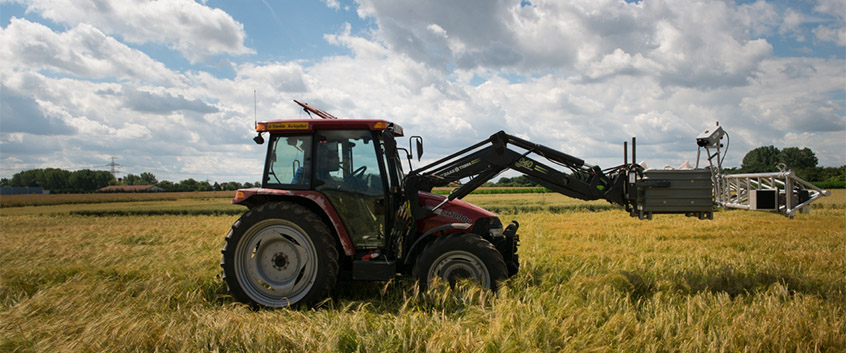
All experiments
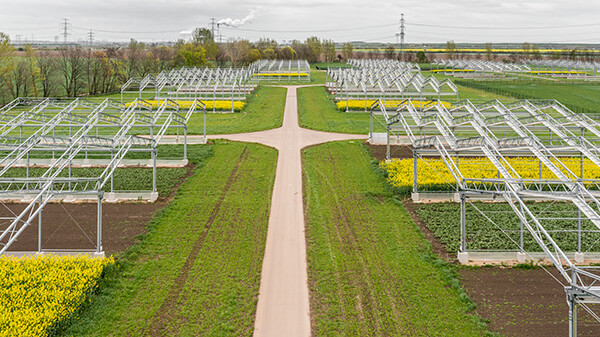
At the Global Change Experimental Facility (GCEF), researchers are investigating how climate change affects ecosystem processes in different land use scenarios. It consists of 50 plots which are cultivated with different degrees of intensity. For half the experimental fields, the scientists simulate climate conditions corresponding to the forecasts for central Germany around the year 2070. On the other half, the crops are grown under currently prevailing weather conditions.
Duration: 2014 until at least 2029
Area: about 7 ha
Contact: Dr. Martin Schädler, UFZ, martin.schaedler@ufz.de
Website: www.ufz.de/gcef
Collaboration: German Centre for Integrative Biodiversity Research (iDiv), Martin-Luther-University Halle-Wittenberg, University of Leipzig, Cologne University, University of Hohenheim
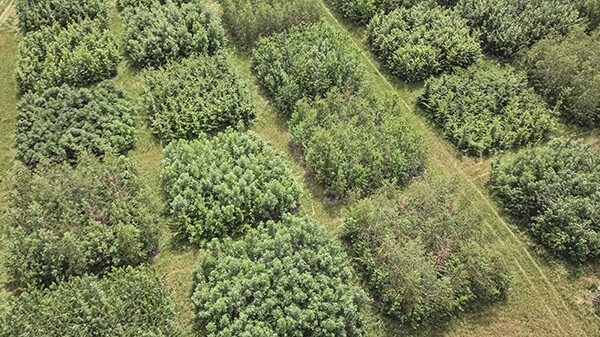
In this experiment, the contribution of mycorrhizal fungi to the relationship between the diversity of tree species and ecosystem functions is being investigated on 80 experimental plots. Mycorrhiza is an important form of symbiosis that occurs between plants and fungi in the soil. The researchers assume that tree stands with high species diversity and the presence of functionally dissimilar mycorrhizal types can use resources more efficiently than monocultures with only one mycorrhizal type.
Duration: since 2015
Area: about 2 ha
Contact: Prof. Nico Eisenhauer, iDiv/Uni Leipzig, nico.eisenhauer@idiv.de
Website: www.idiv.de/de/research/platforms-and-networks/mydiv.html
Collaboration: Helmholtz Centre for Environmental Research (UFZ), University of Konstanz, Martin-Luther-University Halle-Wittenberg, University of Tübingen, University of Göttingen, Catholic University of Liège, University of Alicante, Oxford University, University of Alberta (Edmonton), University of Minnesota, Max Planck Institute for Chemical Ecology, Jena, Environment Agency Austria, French National Institute of Agronomic Research (INRA) Bordeaux
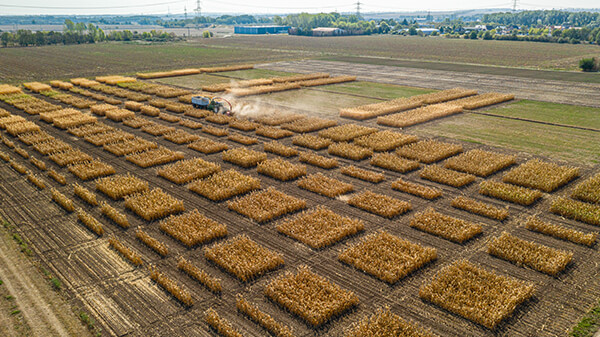
The essence of this experiment is the consistent treatment of cultivated fields with organic and mineral fertilisers (different combinations of N, P, K) over the course of decades – following the crop rotation of winter wheat – silage maize – spring barley – silage maize (until 2014, winter wheat – sugar beet – spring barley – potatoes). On a quarter of the experimental plots, fertilisation was changed in 1978 so that the influence of organic and mineral fertilisation on crops and on soil fertility could be determined based on an experimentally fixed carbon content in the soil. This configuration is particularly important for modelling carbon and nitrogen dynamics in the soil.
Duration: since 1902 (expanded since 1978)
Area: 4 ha
Contact: Dr. Ines Merbach, UFZ, ines.merbach@ufz.de
Website: www.ufz.de/statischer-duengungsversuch
Collaboration: Martin-Luther-University Halle-Wittenberg, University of Wageningen, University of Applied Sciences (HTW) Dresden, University of Aarhus
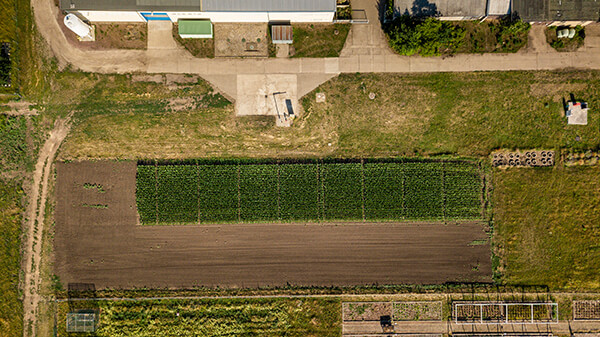
This experiment investigates the long-term effect of extremely high doses of farmyard manure on yield and soil properties. Between zero and 200t/ha of farmyard manure is applied to a fallow plot and a maize monoculture plot. The experiment is particularly important for modelling carbon and nitrogen dynamics and for questions of fundamental research on organic carbon in the soil.
Duration: since 1983
Area: 780 m2
Contact: Dr. Ines Merbach, UFZ, ines.merbach@ufz.de
Website: www.ufz.de/stallmist-steigerungsversuch
Collaboration: Martin-Luther-University Halle-Wittenberg, University of Applied Sciences (HTW) Dresden
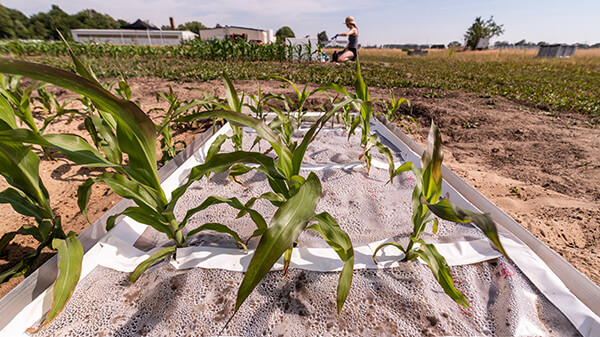
The “Rhizosphere Spatiotemporal Organisation” priority programme of the German Research Foundation (DFG) is investigating the contribution of rhizosphere processes to the stability of agro-ecosystems. For this purpose, 24 parcels of land in Bad Lauchstädt have been set aside and filled with loamy and sandy soil. Two maize genotypes with different root characteristics are grown on them. The researchers want to prove that the rhizosphere is a self-organising system and stable against disturbances.
Area: about 4.000 m2
Contact: Prof. Doris Vetterlein, UFZ, doris.vetterlein@ufz.de
Website: www.ufz.de/spp-rhizosphere/
Collaboration: University of Bayreuth, Jülich Research Centre, University of Landau, University of Hohenheim, Leibniz Institute of Plant Genetics and Crop Plant Research (IPK) Gatersleben, University of Bonn, University of Natural Resources and Life Sciences, Vienna, University of Kiel, University of Köln, Julius Kühn Institute Brunswick, Johann Heinrich von Thünen Institute Brunswick, Technical University Munich, University of Kassel, University of Stuttgart, University of Erlangen, University of Ulm
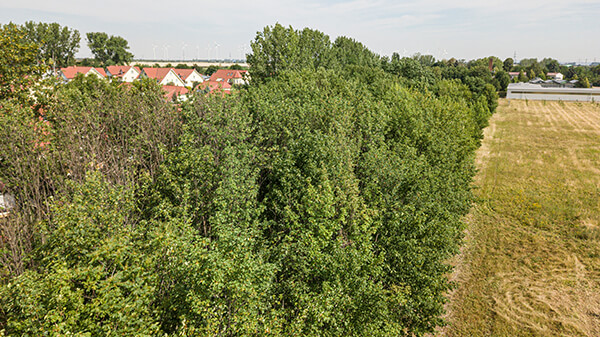
Here the researchers are investigating whether the different starting points or the different gene pools at the beginning of putting arable land to fallow influences the subsequent development of vegetation. Depending on the time of year (spring, summer, autumn), fallow succession starts with a different set of species, because these are very different in their germination ecology and are influenced by parameters such as day length, temperature or precipitation.
Area: about 1 ha
Contact: Dr. Jutta Stadler, UFZ, jutta.stadler@ufz.de
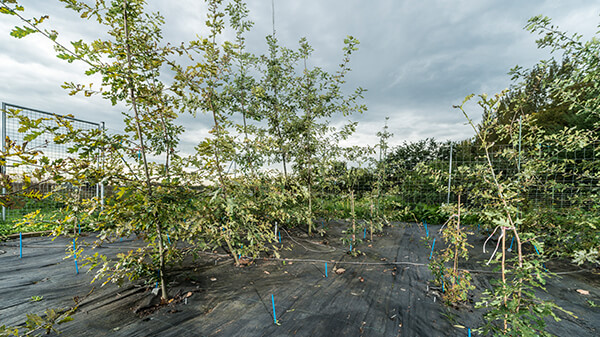
Duration: since 2010
Area: about 1.600 m2
Contact: Dr. Sylvie Herrmann, UFZ, sylvie.herrmann@ufz.de
Website: www.ufz.de/trophinoak-phytoakmeter
Collaboration: German Centre for Integrative Biodiversity Research (iDiv), University of Leipzig, University of Marburg, University of Basel, Technical University Munich, French National Institute of Agronomic Research (INRA) Bordeaux
BugNet is a global collaborative research network that aims to assess the impact of invertebrate herbivores and pathogenic fungi on plant communities and ecosystems.
Contact: Lotte Korell (lotte.korell@ufz.de)
https://www.bug-net.org/
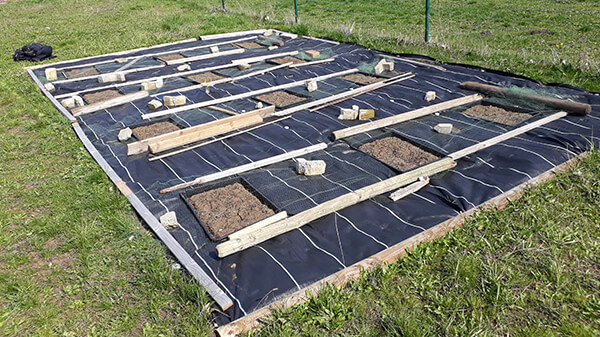
Duration: 2017 until at least 2020
Area: 16 m2
Contact: Dr. Walter Durka, UFZ, walter.durka@ufz.de
Website: grenenet.wordpress.com/news/
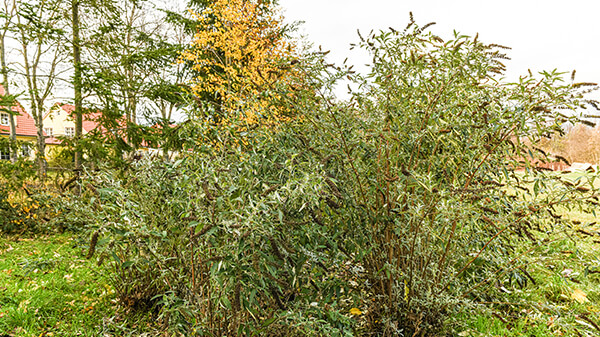
In this experimental garden, the butterfly bush, which has migrated from China to Europe, is used to learn more about the mechanisms of biological invasions. It is hypothesised that evolutionary adaptation contributes to the invasion success of exotic species, so that the lack of natural predators leads to stronger growth, a greater competitive edge and worse defences against insects. Butterfly bush specimens from ten populations each from China and Europe respectively are compared.
Area: about 300 m2
Contact: Dr. Harald Auge, UFZ, harald.auge@ufz.de
Collaboration: Department of Geobotany and Botanical Garden, Martin-Luther-University Halle-Wittenberg
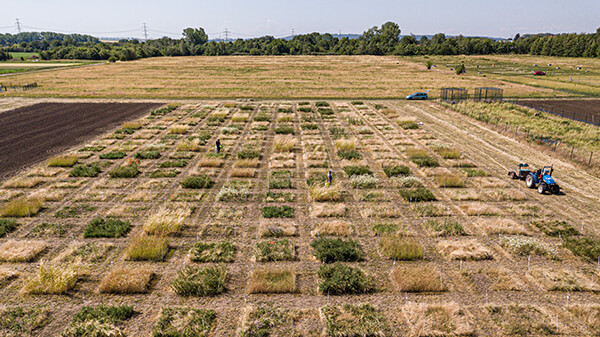
Duration: 2016 until at least 2021
Area: about 4.000 m2
Contact: Dr. Harald Auge, UFZ, harald.auge@ufz.de
Collaboration: Department of Geobotany and Botanical Garden, Martin-Luther-University Halle-Wittenberg
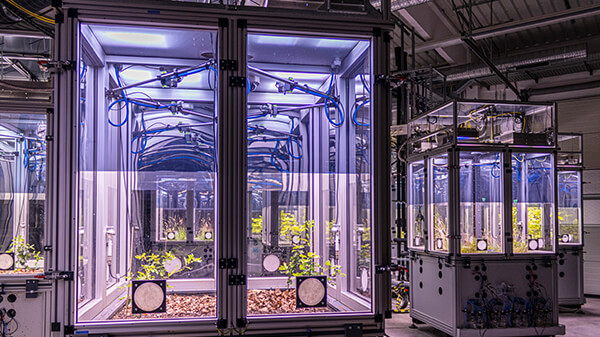
The iDiv Ecotron is a joint research platform of the German Centre for Integrative Biodiversity Research (iDiv) Halle-Jena-Leipzig and the Helmholtz Centre for Environmental Research (UFZ). It houses 24 miniature ecosystems in which environmental conditions like temperature, nutrient supply and precipitation are fully controlled and ecological processes can be measured. The objective is to study the effects on ecosystem functions more accurately through this manipulation of the interactions between flora and fauna.
Area: 580 m2
Contact: Prof. Nico Eisenhauer, iDiv/Uni Leipzig, nico.eisenhauer@idiv.de
Website: www.idiv.de/ecotron
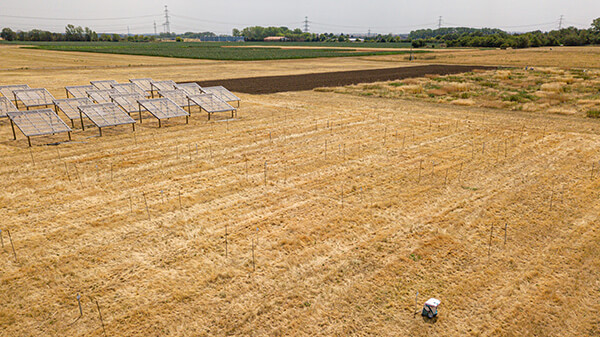
This worldwide network of more than 100 sites on six continents addresses the loss of biodiversity based on the example of grassland ecosystems. The researchers investigate how natural grassland worldwide reacts to nutrient excesses using a standardised experimental design. The network covers the majority of the world’s climate zones with experimental stations in 27 countries, including one in Bad Lauchstädt.
Area: 1.000 m2
Contact: Prof. Stan Harpole, UFZ/iDiv, stan.harpole@ufz.de
Website: www.ufz.de/nutnet
Collaboration: University of Minnesota, University of Missouri, University of Wyoming, University of Guelph, Smithsonian Environmental Research Center
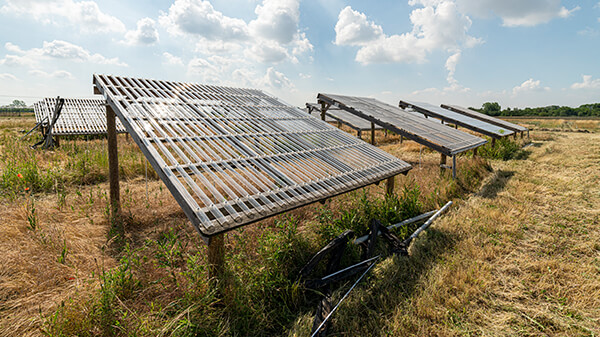
This research network with more than 100 stations worldwide seeks to investigate how and why ecosystems vary in their sensitivity to drought. For this reason, precipitation on the experimental plots is always manipulated to meet the same protocol. The 25 experimental plots in Bad Lauchstädt are subjected not only to extreme drought but also to excess nutrients in order to evaluate the interaction of these two factors on various surface and underground ecosystem processes.
Area: about 600 m2
Contact: Prof. Nico Eisenhauer, iDiv/Uni Leipzig, nico.eisenhauer@idiv.de; Dr. Harald Auge, UFZ, harald.auge@ufz.de
Website: www.ufz.de/droughtnet
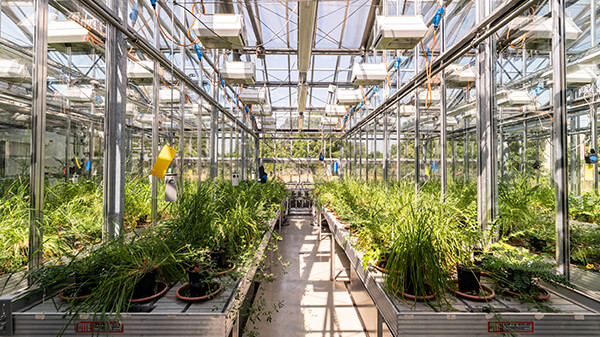
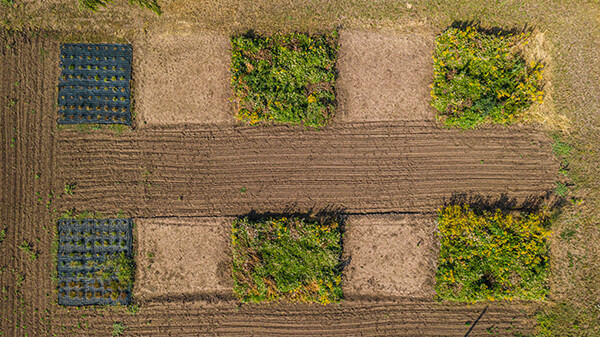
The key question of this experiment is how different fallow types affect soil characteristics . Three types of bare fallow are investigated – mechanical fallow, herbicide fallow, and the combination of both - as well as a succession fallow repeated four times.
Area: 672 m2
Contact: Dr. Ines Merbach, UFZ, ines.merbach@ufz.de
Collaboration: Hochschule für Technik und Wirtschaft (HTW) Dresden
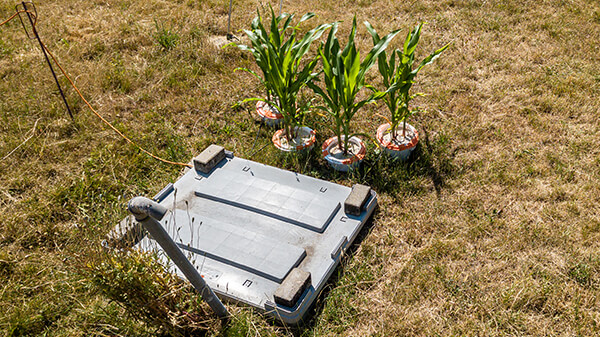
Duration: since 1996
Area: 4 pots
Contact: Prof. Hans-Jörg Vogel, UFZ, hans-joerg.vogel@ufz.de
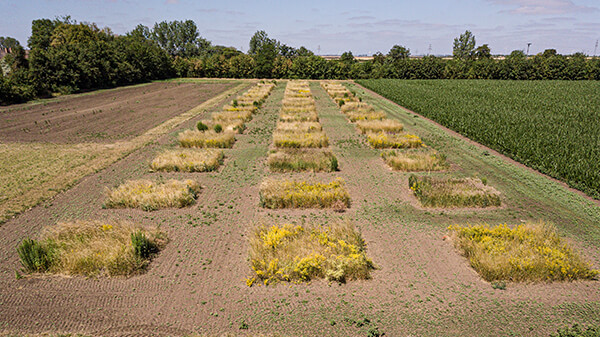
The significance of the origin of seed for the development of the vegetation is to the research focus of this experiment. With this in mind, the researchers sowed artificial meadow systems with an identical species inventory on a formerly fallow plot, in which the origin of the species in the experimental plots is different. Thus, there is seed from the immediate environment, from outside the region, and from various other countries. This should answer the question as to how far local adaptations influence the development of vegetation, primary production and resistance of the meadow system.
Area: about 1 ha
Contact: Dr. Jutta Stadler, UFZ, jutta.stadler@ufz.de
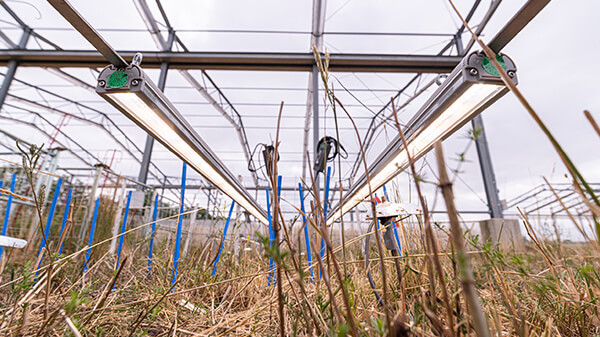
LiCoDiv (light competition and diversity) is an experiment in which traditional and new methods of light manipulation and their effects on abiotic factors and plant growth are compared. Competition for light as an essential resource for plant growth can play a decisive role in the loss of biodiversity through over-fertilisation. The effects of cutting back, tie backs and LED lamps are being investigated on 56 plots, of which half are fertilised.
Duration: 2018 until at least 2020
Area: about 75 m2
Contact: Maria-Theresa Jessen, UFZ/iDiv, maria-theresa.jessen@ufz.de
Collaboration: German Centre for Integrative Biodiversity Research (iDiv)
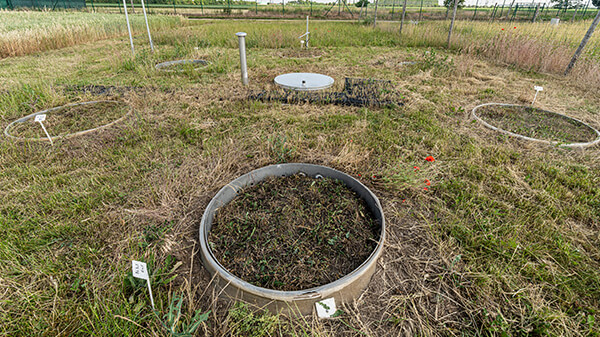
In the four TERENO observatories, almost 140 lysimeters that were technically identical in design were installed at 13 sites. They serve to research the functions of soil in water and materials circulation under climate change conditions. In Bad Lauchstädt, a total of 18 lysimeters were set up and filled with soil from different regions of Germany. Water and material flows are recorded on the soil surface and in the direction of the groundwater.
Area: 18 lysimeters
Contact: Prof. Hans-Jörg Vogel, UFZ, hans-joerg.vogel@ufz.de
Website: www.tereno.net
Collaboration: Part of the TERENO (TERrestrial ENvironmental Observatories) Helmholtz-Initiative
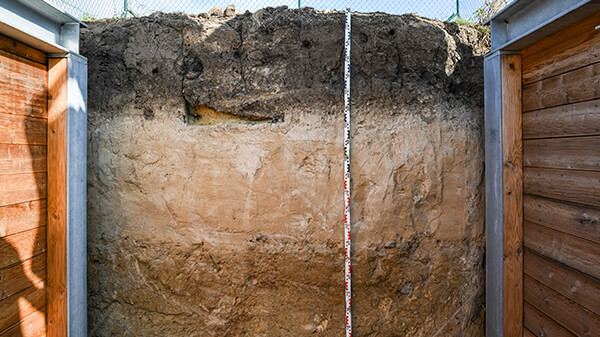
A soil profile is a vertical section through a soil mass, with which the various soil layers, the soil type and other soil parameters can be determined. The new soil profile in Bad Lauchstädt was created in 2018. It shows the black earth which, on account of its powerful dark brown to black humus-rich topsoil, is among the most fertile soils on earth. It is mainly used for teaching and training.
Contact: Dr. Ines Merbach, UFZ, ines.merbach@ufz.de
Website: www.ufz.de/bodenprofil
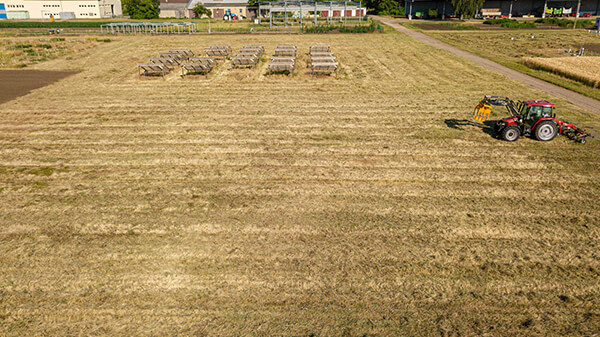
The DRAGNet (Disturbance and Resources Across Global Grasslands) network consists of 48 sites on six continents. Building on the NutNet global network, it examines the interactions between two omnipresent global changes by which grassland ecosystems are particularly affected: land-use changes and fertiliser inputs.
Area: 1.000 m2
Contact: Prof. Stan Harpole, UFZ/iDiv, stan.harpole@ufz.de
Website: www.nutnet.org/dragnet
Collaboration: University of Minnesota, University of Missouri, University of Wyoming, University of Guelph, Smithsonian Environmental Research Center
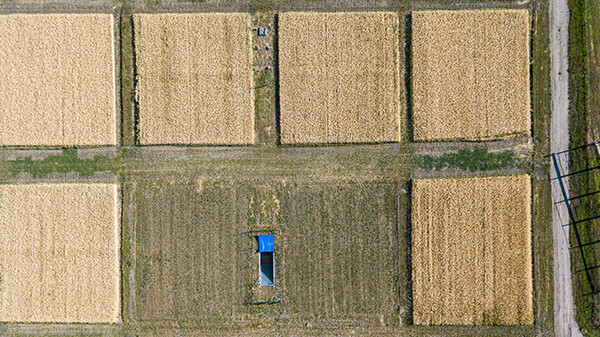
The intensive measuring field consists of differently managed plots (e.g. arable farming, fallow, green manure), on which soil and plant characteristics are recorded as basic data to validate agro-ecosystem models. The original experiment with 64 plots was changed in 2013 and reduced to 12 plots. The measurements taken there now focus on changes in soil temperature and soil water content at different depths.
Area: since 2013 about 9.000 m2
Contact: Dr. Uwe Franko, UFZ, uwe.franko@ufz.de
Webseite: www.ufz.de/intensivmessfeld
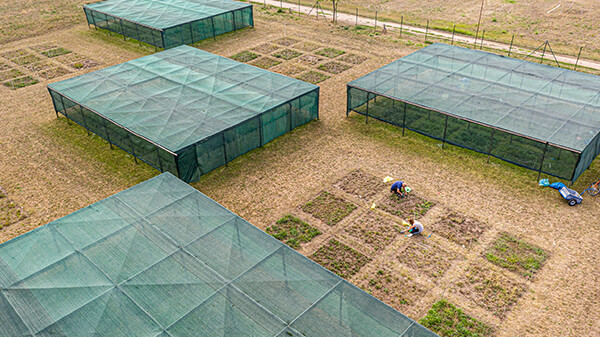
This experiment investigates whether the relationships between plant diversity and ecosystem processes are determined by the availability of resources. The researchers therefore vary the plant diversity (plots with one, two or four plant species) and the resource availability (light through shading, nutrients through fertilising). Since 2019, the experimental plots have been arranged in a so-called split plot design in order to investigate the change in the species communities due to the immigration of new plant species.
Area: about 4.000 m2
Contact: PD Dr. Christiane Roscher, UFZ/iDiv, christiane.roscher@ufz.de
Website: www.ufz.de/divresource
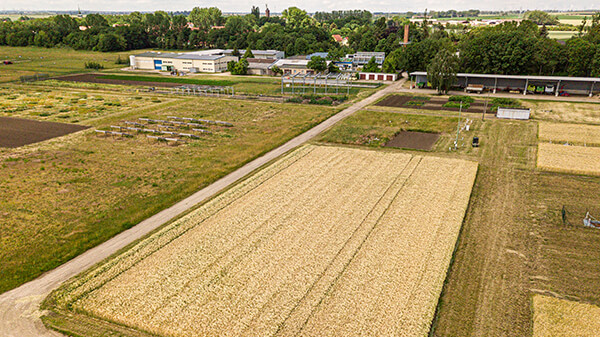
On the permanent soil observation plot, researchers investigate changes in the physical, chemical and biological condition of soils. To do so, they take plant and soil samples, analyse the soil zoology and conduct vegetation surveys. They also analyse the soil’s physical parameters. The experiment thus forms an important basis for preventive soil protection.
Area: 2.800 m2
Contact: Landesamt für Umweltschutz Sachsen-Anhalt
